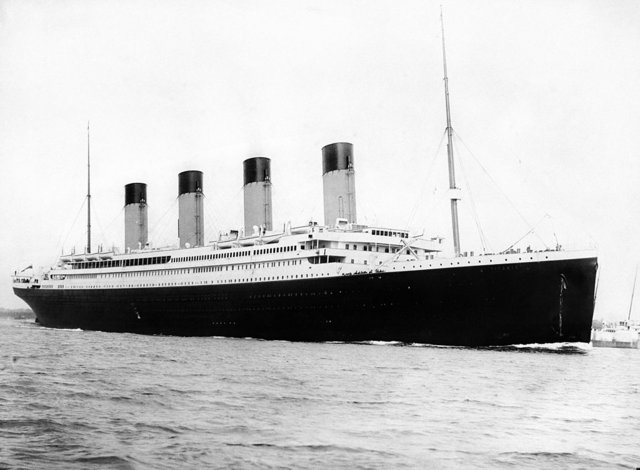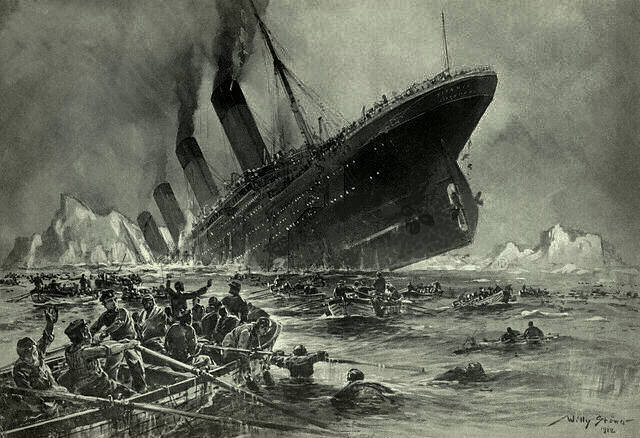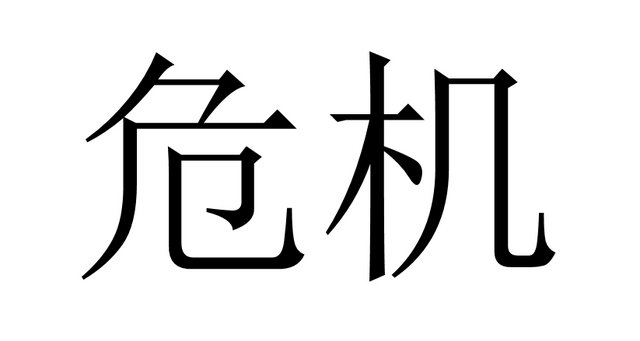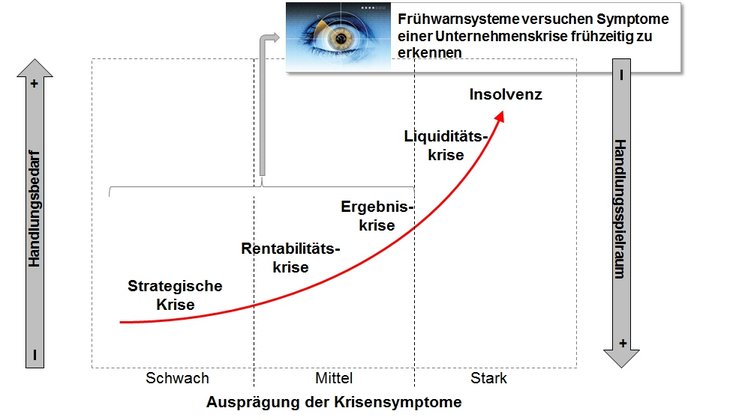Are you familiar with the following quotation?
"When anyone asks how I can best describe my experience in nearly 40 years at sea, I merely say, uneventful. Of course there have been winter gales, and storms and fog and the like, but in all my experience, I have never been in any accident of any sort worth speaking about. I have hardly ever seen a ship in distress at sea in all this time ... I never saw a wreck and never have been wrecked, nor was I ever in any predicament that threatened to end in disaster of any sort."
It was the pride of Great Britain. But its maiden voyage from Southampton to New York turned out to be its last. Excessive speed, blind faith in technology and a huge iceberg combined to cause an inferno. Shortly before midnight on 14th April 1912, during its maiden voyage from Liverpool to New York, the British luxury liner Titanic struck an iceberg and sank. Because of its 16 water-tight compartments, the ship was considered to be unsinkable, but unfortunately the iceberg penetrated five of them. Of the 2220 people aboard 1513 lost their lives, including the Captain.
His name was E.J. Smith. And he was the person who said the words quoted above.
What conclusions can we draw from this catastrophe?
- The ship sailed too quickly through dangerous waters.
- The lifeboats only had enough space for around half the passengers and crew.
- The ship Californian, which was in the area of the disaster, did not come to assist because its radio operator was off duty and asleep.
As on the oceans, in the complex economic world of the 21st Century, some supposed flagships have been getting into acute distress. Whether it's Nokia, Kodak, Schlecker, Enron, Lehman Brothers, Philipp Holzmann or WorldCom – business leaders were too late in recognising many risks (particularly those of a strategic nature), ignored the early warning indicators or were simply corrupt. It is hardly surprising then that the average life expectancy of companies is only around 10 to 15 years. Insolvency administrators and economics regularly report that the majority of bankruptcies could be prevented if companies were to preventively identify risks (particularly strategic risks) and implement appropriate measures to deal with them.
Crisis is always an opportunity too
The Chinese character for crisis is made up of the symbols for risk (危) and opportunity (机). The following negative examples show how companies have got into acute business crises. Many of these companies have totally failed to see an opportunity in the crisis. The major prerequisite for doing this would be open and credible communication.
Can you remember the following crises?
- 1st June 1974: A fire broke out a the NYPRO chemical plant in Flixborough (England). Before the fire engines arrived to tackle the blaze, a powerful explosion occurred. What had happened? The plant in Flixborough produced caprolactam, which is necessary for the manufacture of nylon. This involved an oxidation process using hexamethylene (comparable with petrol). An inspection of reactor 5 in March had identified that hexamethylene was escaping (a crack of approx. two metres in length). To get the plant running again quickly, the decision was taken to connect reactor 4 to reactor 6. The other reactors were not inspected more closely. The planning and modifications were decided quickly. The design drawing was done in chalk on the floor of the workshop. No static calculation was carried out. After a serious of further stoppages – which were not viewed as early warning indicators – on 1st June 1974 an explosion with the force of between 15 and 45 tons of TNT occurred. The entire plant was destroyed and 28 people were killed.
- March 1979: At the Three Mile Island (TMI) nuclear reactor near Harrisburg, Pennsylvania, an accident occurred during cleaning work. A chain reaction of causes in the complex nuclear reactor system resulted in failure of the cooling water system. The emergency cooling system was not working. The reactor core quickly started heating up to approx. 2,750 degrees Celsius. The reactor was shut down.
- September 1982: In the Chicago metropolitan region, seven people died after taking the painkiller Tylenol Extra Strength. Cyanide was the cause of the deaths. Capsules of the painkiller Tylenol Extra Strength were found in all the victims. Tylenol accounted for seven percent of Johnson & Johnson's total turnover. After the deaths, the US media reported extensively on the Tylenol case. Johnson & Johnson had no action plan for crisis communication, but thanks to open communication channels and good brand management still managed to respond very professionally to the crisis. The costs resulting from this crisis added up to more than 500 million US dollars.
- 3rd December 1984: At Union Carbide of India Ltd in Bhopal, a tank containing the liquid pesticide component methyl isocyanate (MIC) exploded. A total of 40 tons of MIC evaporated. No alarm was triggered and between 2,000 and 10,000 people died. Several hundred thousand more were injured. Massive environmental damage was caused. There were no adequate emergency or disaster plans.
- 24th March 1989: The 300 metre long oil tanker Exxon Valdex ran aground in Prince William Sound (Alaska). The Captain, the alcoholic Joseph Hazelwood, was drunk at the time and was in his bunk. Responsibility on the bridge lay with Third Officer Gregory Cousins, who was thought to have been suffering excessive fatigue before his watch due to over work and lack of rest. He failed to bring the Exxon Valdez back onto a safe course after a deviation from its normal itinerary, as agreed previously with the Captain. Shortly after midnight, it struck the Bligh reef in Prince William Sound off Southern Alaska. Forty million litres of oil escaped. This triggered one of the world's biggest environmental disasters. The oil disaster cost Exxon more than 8 billion US dollars.
- 26th April 1986: A severe nuclear disaster occurred in Block 4 of the Chernobyl nuclear power station close to the Ukrainian city of Prypjat. While performing a simulation of a complete power failure, an uncontrolled power increase occurred due to serious violations of the applicable safety regulations and the design characteristics of the graphite moderated RMBK-1000 type nuclear reactor, leading to the entire reactor exploding. Within the first ten days after the explosion, radioactivity of several trillion Becquerel was released. The radioactive substances that got into the earth's atmosphere caused radioactive rain to fall, contaminating the region to the North East of Chernobyl and many other countries in Europe.
- From 11th March 2011: At the Fukushima Daiichi nuclear power station in Japan, the Tōhoku earthquake triggered a series of catastrophic accidents and serious failures in four of the six reactor blocks simultaneously. In Blocks 1 to 3, the cores melted. Huge quantities of radioactive material were released, contaminating air, soil, water and foodstuffs on land and sea in the surrounding area. Around 100,000 to 150,000 inhabitants had to evacuate the area temporarily or, in some cases, permanently. Hundreds of thousands of animals left behind on farms perished. The accidents destroyed four of the power station's six reactor blocks. The disposal work is likely to take 30 to 40 years. The disaster led to increased global scepticism about civilian use of nuclear energy.
One characteristic of all the above events is the fact that companies and even societies can very quickly get into a crisis situation.
Based on a specific crisis, the areas of
- Crisis prevention;
- Early intelligence, early identification and early warning;
- Damage limitation;
- Resolution of negative impacts, and
- Learning from the crisis (crisis follow-up)
are outlined briefly below.
Crisis prevention
Crisis prevention is all about the issue of what measures have been implemented to avert a potential crisis or to steer an acute crisis in their right direction. Crisis prevention is closely linked to crisis awareness. For example, a scenario analysis ("What if" analysis) can be used to study the potential causes of crises. The aims include drawing up a crisis plan enabling a rapid response to the occurrence of potential crisis scenarios. The key factor is to have clear guidelines for crisis communication and responsibilities. The crisis plan should not be viewed as a rigid process definition. To respond quickly to an imminent crisis, "dark sites" on the Internet can be useful. They go live online in case of a crisis.
Early intelligence, early identification and early warning
In terms of early intelligence, a company should attempt to pick up even very weak signals of a crisis and obtain data about possible causes of a crisis. Early identification and warning involves identifying typical crisis indicators in good time when clearly defined tolerance limits are exceeded and steering latent crises in the right direction.
Damage limitation
What measures have been taken after the emergence of the crisis to limit damage? A preventive crisis plan can provide valuable assistance here. In the damage limitation phase of the process, targeted crisis communication is particularly important. For example, networks with media outlets built up in the past should not be underestimated.
Resolution of negative impacts
How can the negative impacts of a crisis be resolved? How do we regain the trust of customers or shareholders? Targeted communication also plays a crucial role in this phase.
Learning from the crisis (crisis follow-up)
After a crisis, companies should learn from it. This reflects the Chinese character for "crisis", which is made up of the symbols for risk and opportunity.
Silence is silver – talking is golden
- Doing nothing causes a "never ending story".
- A lack of a communication during the crisis restricts the scope for further action.
- A negative media response is similar to a domino effect and therefore has an increasing (in some cases uncontrollable) momentum.
- Doing nothing unsettles customers, suppliers, employees, banks etc.
- Initially "putting up a wall" instead of communicating increases the extent and lengthens the duration of the crisis.
Offensive communication ...
- ... means not backing down,
- ... helps to promote action instead of reaction and
- ... creates trust among all stakeholders.
Effective statements are half way to convincing ...
Faults in crisis communication are frequently caused by:
- unauthorised or agreed statements,
- incorrect (or partly accurate) information / data in statements,
- discrepancy between action at a practical level and the information communicated.
Further literature:
- Garth, A. J. (2008): Krisenmanagement und Kommunikation [Crisis Management and Communication], Wiesbaden 2008.
- Krystek, U. (1987): Unternehmenskrisen: Beschreibung, Vermeidung und Bewältigung überlebenskritischer Prozesse in Unternehmungen [Business Crises: Description, Prevention and Management of Critical Survival Processes in Enterprises], Wiesbaden 1987.
- Steinke, L. (2014): Kommunizieren in der Krise - Nachhaltige PR-Werkzeuge für schwierige Zeiten [Communication in a Crisis - Sustainable PR Tools for Tough Times], Wiesbaden 2014.
- Töpfer, A. (1999): Plötzliche Unternehmenskrisen – Gefahr oder Chance? [Sudden Business Crises - Hazard or Opportunity?] Neuwied/Kriftel 1999.

![Crisis management [Image source: © Adobe Stock] Crisis management [Image source: © Adobe Stock]](/fileadmin/user_upload/Headerbilder/Headerbild_Krisenmanagement.jpg)



